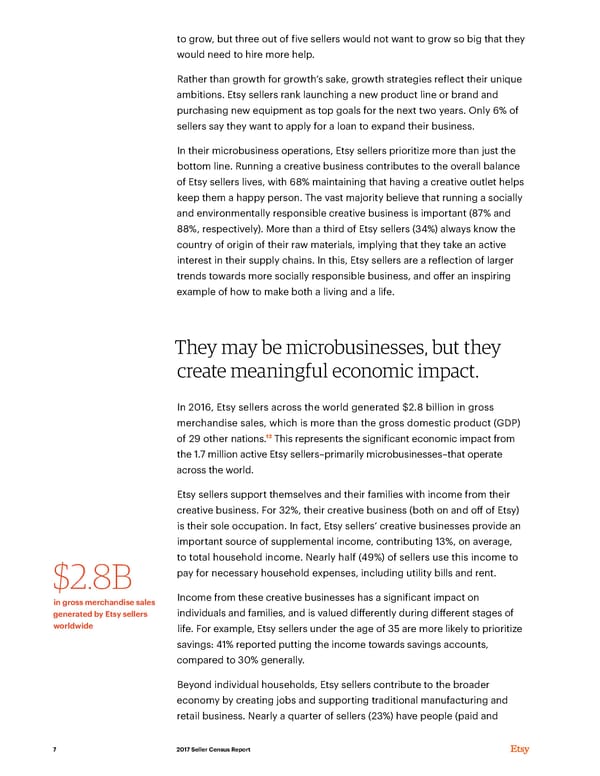to grow, but three out of five sellers would not want to grow so big that they would need to hire more help. Rather than growth for growth’s sake, growth strategies reflect their unique ambitions. Etsy sellers rank launching a new product line or brand and purchasing new equipment as top goals for the next two years. Only 6% of sellers say they want to apply for a loan to expand their business. In their microbusiness operations, Etsy sellers prioritize more than just the bottom line. Running a creative business contributes to the overall balance of Etsy sellers lives, with 68% maintaining that having a creative outlet helps keep them a happy person. The vast majority believe that running a socially and environmentally responsible creative business is important (87% and 88%, respectively). More than a third of Etsy sellers (34%) always know the country of origin of their raw materials, implying that they take an active interest in their supply chains. In this, Etsy sellers are a reflection of larger trends towards more socially responsible business, and offer an inspiring example of how to make both a living and a life. They may be microbusinesses, but they create meaningful economic impact. In 2016, Etsy sellers across the world generated $2.8 billion in gross merchandise sales, which is more than the gross domestic product (GDP) of 29 other nations.12 This represents the significant economic impact from the 1.7 million active Etsy sellers–primarily microbusinesses–that operate across the world. Etsy sellers support themselves and their families with income from their creative business. For 32%, their creative business (both on and off of Etsy) is their sole occupation. In fact, Etsy sellers’ creative businesses provide an important source of supplemental income, contributing 13%, on average, to total household income. Nearly half (49%) of sellers use this income to $2.8B pay for necessary household expenses, including utility bills and rent. in gross merchandise sales Income from these creative businesses has a significant impact on generated by Etsy sellers individuals and families, and is valued differently during different stages of worldwide life. For example, Etsy sellers under the age of 35 are more likely to prioritize savings: 41% reported putting the income towards savings accounts, compared to 30% generally. Beyond individual households, Etsy sellers contribute to the broader economy by creating jobs and supporting traditional manufacturing and retail business. Nearly a quarter of sellers (23%) have people (paid and 7 2017 Seller Census Report
 Etsy: Crafting the Future of Work Page 6 Page 8
Etsy: Crafting the Future of Work Page 6 Page 8